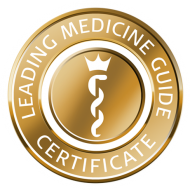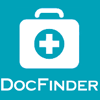Was unsere Patienten sagen
Online Fortbildung am WIF
Am 20.2.2019 hat am WIF die erste Online Fortbildung für Kolleginnen und Kollegen sowie Interessenten im ganzen Land stattgefunden. Dabei ging es rund um das spannende Thema der frühzeitig erniedrigten Eierstockfunktion.Den ersten Vortrag diesbezüglich hat Professor Ott von der Universitätsfrauenklinik zum Thema „Premature Ovarian Failure“ gehalten. In seinem Vortrag ist Prof. Ott detailliert auf die verschiedenen Gründe der vorzeitigen Menopause sowie mögliche Behandlungsansätze abseits des Kinderwunsches eingegangen. Auch die Diagnostik und im Speziellen die unterschiedlichen, oft unklaren Gründe sind besprochen worden.Als zweiter Redner ist Dozent Feichtinger auf verschiedene Behandlungsalternativen bei Kinderwunsch und reduzierter oder erschöpfter Eierstockfunktion eingegangen. Diesbezüglich hat er die Datenlage zu medikamentösen Therapien zur Verbesserung der Eierstockfunktion sowie erste Daten zur Thrombozytenplasmatherapie vorgestellt. Priv.-Doz. Feichtinger betonte, dass diese Therapien vor allem bei reduzierter, jedoch nicht vollständig erschöpfter Eierstockfunktion gute Erfolge bringen können. Bei völlig erschöpfter Eierstockreserve komme weiterhin für einen Großteil der Patientinnen ausschließlich die Eizellspende in Frage. Diese ist auch in Österreich seit 2015 möglich und wird im Wunschbaby Institut Feichtinger angeboten. Das Ziel sollte jedoch eine Vorbeugung einer ungewollten Kinderlosigkeit aufgrund einer reduzierten Eierstockfunktion sein. „Mehr als 30% der Kinderwunschpaare leiden an einer reduzierten Eierstockreserve“ betont Priv.-Doz. Feichtinger, „viele dieser Fälle könnten durch eine frühzeitige Erkennung vermieden werden“.Das Wunschbaby Institut Feichtinger hat diesbezüglich den ersten genetischen Test für die Erkennung eines erhöhten genetischen Risikos für eine reduzierte Eierstockreserve entwickelt. Da sich das genetische Rüstzeug im Laufe des Lebens nicht ändert kann mit diesem Test bereits in jungen Jahren ein erhöhtes Risiko erkannt und vorgebeugt werden. „Bei auffälligem Testergebnis kann der Kinderwunsch entweder frühzeitig erfüllt werden, oder wenn das momentan nicht möglich ist Eizellen für die spätere Verwendung eingefroren werden“ so Feichtinger abschließend.Die Vorträge können unter den folgenden Links abgerufen werden:Vortrag von Dr. Ott: https://youtu.be/mimemI6I9nkVortrag von Dr. Feichtinger: https://youtu.be/O1m5JpyVF1U
Liebes Wunschbaby-Team!
Spät aber doch hier der offizielle Willkommensgruß unseres kleinen Nachwuchses. Vielen herzlichen Dank für Ihre ganz wunderbare kompetente und einfühlsame Betreuung am Ende unserer Kindewunschzeit. Das ist es also, unser kleiner Aprilscherz, den wir mit Ihrer Hilfe und Ihrer sehr netten Kollegin ins Leben gebracht haben! Ganz lieben Dank nochmals Familie R.-W.Herzlichen Dank
Wir sind schon etwas verzweifelt in die Kinderwunschklinik gekommen. Dr. Feichtinger hat uns sofort das Gefühl gegeben, dass alles gut gehen wird. Wir haben uns jederzeit gut aufgehoben und ernst genommen gefühlt. Das Team wirkt familiär und absolut kompetent. Heute gehen wir mit einem Ultraschallbild nach Hause. Danke!Liebes Wunschbaby Team!
Herzlichen Dank für die einfühlsame und sehr professionelle Betreuung! Wir waren in den besten Händen! Familie K.Schlafrhythmus beeinflusst Risiko für Schwangerschaftskomplikationen
Bereits zuvor konnte gezeigt werden, dass ein unregelmäßiger Schlafrhythmus die weibliche Fruchtbarkeit negativ beeinflussen kann. Eine neue US-amerikanische Studie, veröffentlicht im renommierten Fachjournal Human Reproduction, geht nun einen Schritt weiter: Sie untersucht den Zusammenhang zwischen Schlafverhalten vor der Schwangerschaft und dem Auftreten von Komplikationen während der Schwangerschaft.Studie mit über 1.200 Frauen
Die Forscher:innen analysierten die Schlafgewohnheiten von mehr als 1.200 Frauen vor der Schwangerschaft und setzten diese in Relation zum späteren Schwangerschaftsverlauf. Das Ergebnis: Während sich die Schlafdauer – also ob Frauen kürzer oder länger schliefen – nicht signifikant auf das Risiko für Schwangerschaftskomplikationen auswirkte, zeigte sich ein klarer Zusammenhang mit der Schlafenszeit.Frühere Einschlafzeiten senken das Risiko
Frauen, die regelmäßig früh ins Bett gingen, hatten ein signifikant geringeres Risiko für Komplikationen wie Frühgeburt, Schwangerschaftsdiabetes oder Schwangerschaftshochdruck. Entscheidend scheint also weniger die Länge, sondern der Rhythmus des Schlafes zu sein – und insbesondere, ob dieser im Einklang mit der „inneren Uhr“ steht.Sozialer Jetlag als Risikofaktor
Ein besonderes Augenmerk richteten die Studienautor:innen auf den sogenannten sozialen Jetlag. Dieser beschreibt ein unregelmäßiges Schlafmuster, das durch berufliche oder soziale Verpflichtungen entsteht. Frauen, die vor der Schwangerschaft unter einem solchen sozialen Jetlag litten, hatten ein deutlich erhöhtes Risiko für Komplikationen in der Schwangerschaft.Fazit: Regelmäßiger Schlaf schützt Mutter und Kind
Ein regelmäßiger und natürlicher Schlaf-Wach-Rhythmus, im Einklang mit der inneren Uhr, kann also nicht nur unsere allgemeine Gesundheit verbessern – er wirkt sich auch positiv auf die Schwangerschaft aus und kann zukünftige Komplikationen vermeiden helfen. Für Frauen mit Kinderwunsch ist es daher sinnvoll, schon vor der Schwangerschaft auf gesunde Schlafgewohnheiten zu achten.Quelle:Freeman, J. R., Whitcomb, B. W., Bertone-Johnson, E. R., O’Brien, L. M., Dunietz, G. L., Purdue-Smithe, A. C.,…Mumford, S. L. (2025). Preconception sleep, pregnancy loss, and adverse pregnancy outcomes among women with a history of pregnancy loss. Human Reproduction. https://doi.org/10.1093/humrep/deaf074
Lesen Sie mehr

IVF - In Vitro Fertilization (assisted reproduction)
What do IVF and ICSI mean?
In the IVF method, around 100,000 sperm are introduced to each egg cell. The best, most vital sperm naturally makes its own way into the oocyte.
Indications:
IVF is the preferred conventional method for assisted reproduction in patients with endometriosis, PCOS, or obstructed fallopian tubes AND the male partner has a normal sperm analysis.
Success rates
The chance of successfully becoming pregnant with the assistance of IVF is about 30-40% per cycle, dependent on the age of the individual partners, hormonal balances, the presence of underlying diseases (diabetes, high blood pressure, etc.) and lifestyle factors (being overweight, stress, nicotine and excessive alcohol consumption, etc.).
How IVF works
The seven steps of IVF-treatment:
- Hormonal stimulation of the ovaries
- Follicular puncture
- Collection of semen
- Fertilization through IVF
- Embryo transfer
- Assisted laser hatching
- Nidation phase
1. Hormonal stimulation of the ovaries
Treatment with IVF (in-vitro fertilization) or ICSI (intracytoplasmic sperm injection) nearly always (with very few exceptions) takes place after hormonal stimulation of the ovaries. The goal of hormonal therapy is to increase the number of maturing follicles in both ovaries to obtain several fertile eggs.
A preparatory phase (“down-regulation”) is intended to prepare the body for the actual stimulation by suppressing the body's own hormone production or release. This so-called "down-regulation" can take place either by applying daily injections under the skin (subcutaneous) or through oral intake of certain medications. The advantage of the preparatory phase is that controlling the stimulation phase becomes far easier.
FSH (follicle-stimulating hormone) and LH (luteinizing hormone) are used in their pure hormonal form or combined for the subsequent stimulation of the ovaries. Throughout the hormonal treatment, a specific dose (dependent on weight, age, etc.) is administered daily at the same time every day through subcutaneous injections.
The use of these medications and how they are applied will be explained in detail when starting treatment. The injection of these medications will be demonstrated so that patients and/or their partners can inject themselves daily, so that daily visits to the doctor are not necessary.
The number of follicles, the course of their growth, and the development of the uterine lining will be closely observed per ultrasound. Once the follicles reach a certain size, ovulation will be triggered using the hormone hCG (human chorionic gonadotropin). This technique helps determine the optimal time for egg cell retrieval—namely, shortly before ovulation.
2. Follicular puncture
The egg cells are removed through transvaginal extraction (through the vagina) under ultrasound guidance 36 hours after the application of the “ovulation stimulating shot”. A needle is first used to focus the follicles under ultrasound guidance, and then to puncture and collect the follicular fluid containing the egg cells (oocytes). Afterward, the egg cells are separated from the follicular fluid under microscopic view and transferred to a special culture medium and placed in an incubator at 37°C.
On average, the follicular puncture only lasts 5-15 minutes, depending on the number of follicles. In order to make the procedure more comfortable, our patients receive a combination of sleep and pain medication. The follicular puncture is performed on an outpatient basis, and a post-procedural 1-2-hour observational period in our relaxation rooms is necessary afterward.
3. The semen collection
The semen is obtained on the day of the follicular puncture through masturbation after 2-3 days of abstinence (no ejaculation). This is sometimes difficult, especially when “ordered” to do so, or due to stress/time pressure. Therefore, in seldom circumstances, it is also possible to bring the semen sample from home. It should be noted, however, that the period between semen collection and delivery of the sample to the institute cannot exceed two hours.
4. Fertilization: conventional IVF method
The fertilization of the extracted egg cells happens on the same day as they were retrieved. The sperm and the egg cells are brought together in a small bowl using a special preparation technique, which allows the fertilization process to take place in a "natural" way. The next day, a microscopic examination is performed to see how many of the egg cells show signs of fertilization (for example, if two pronuclei and two polar bodies are formed).

5. The embryo transfer
2-5 days after fertilization, the embryo is brought into the uterus using a thin, flexible plastic tube (catheter) under ultrasound guidance. Which day the embryo transfer will take place on is dependent on the number of fertilized eggs. If 1-4 egg cells are successfully fertilized, then they are usually transferred to the uterus 2-3 days after the follicular puncture. During the 2-3 days, the embryos are assessed daily regarding their development (cell division) and other specific requirements, such as cell division rates and consistency of cell division. The embryos with the best quality are selected for transfer.
If there are five or more embryos, then the transfer is performed five days after fertilization, which is referred to as a blastocyst transfer. A blastocyst is the furthest stage of development that can take place outside of the human body. If more than five embryos of top-quality are available for transfer, then these can be frozen.
The transfer of the embryos into the uterus only lasts a few minutes and is usually painless. We advise our patients to relax in our relaxation rooms for 20-30 minutes afterward.
6. Assisted Laser Hatching (ALH)
The egg cell and the embryo are surrounded by a solid shell, the so-called zona pellucida. When the embryo reaches the blastocyst stage, it must hatch out of this shell in order to implant itself in the uterus. Sometimes, however, this sheath is "hardened" or thicker than average, which makes implantation more difficult or even impossible. When this happens, the incision of the zona pellucida using a laser makes it easier/possible for the growing embryo to "hatch" and thus implant itself into the uterine lining.
7. Nidation phase (Implantation phase, Luteal Phase)
With the follicular puncture begins the second half of the menstrual cycle, the so-called luteal phase. Throughout this phase, the hormones produced by the corpus luteum are supported using medication, to ensure that the endometrium is optimally prepared for the implantation of the embryo. The medication used in the luteal phase can be applied as intramuscular depot injections, taken orally, or through vaginal suppositories.
The earliest that a pregnancy can be determined is two weeks after fertilization of the oocytes through the detection of the pregnancy hormone hCG in the blood or urine. If the pregnancy test results are positive, support of the luteal phase is continued until the 12th week of pregnancy.
- Overview
- IVF
- IVF in 10 steps
- Cause of miscarriages
- Assisted-Hatching
- Chipsi
- Application of Seminal Plasma
- Egg cell donation
- Genetics
- Testicular puncture
- Insemination
- ICSI
- Fertility treatment in same-sex couples
- The dream to have children despite cancer
- Complementary Medicine
- Cryopreservation
- Male Infertility
- PICSI
- Psychotherapeutic support
- Sperm and egg cell donations
- Social Freezing



































